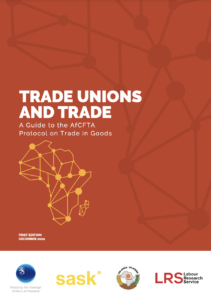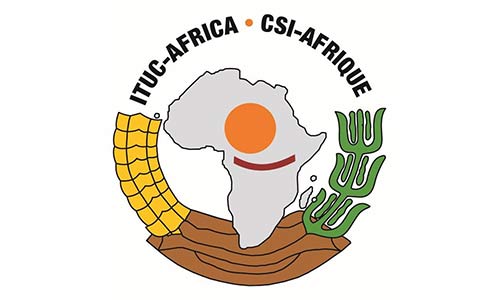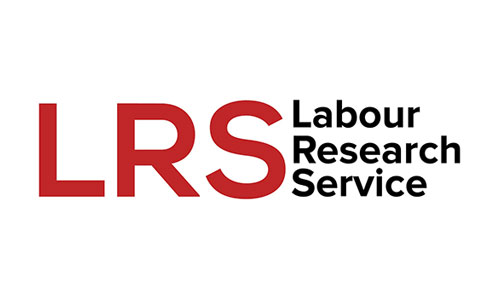Trade unions have an opportunity to influence the AfCFTA Protocol on Trade in Goods, its implementation and the inclusion of labour protections.
What is the Protocol on Trade in Goods?
The Protocol on Trade in Goods is one of nine protocols that set out the rules, conditions and procedures for each specific area of the African Continental Free Trade Area (AfCFTA) Agreement. The Protocol aims to create a liberalised market for trade in goods in line with Article 3 of the AfCFTA Agreement and directly addresses the removal of financial (tariff barriers) and non-financial (non-tariff barriers (NTBs)) barriers to trade.
Definitions
Tariffs: fees normally collected by a country’s customs authority
Non-tariff barriers: regulations, standards, quotas, subsidies or certification procedures.
The Protocol on Trade in Goods also covers least developed country (LDC) classifications, rules of origin, tariff schedules and sensitive goods.
The removal of trade barriers in Africa represents a complex task, given the disparities between different countries. It is important that trade unions understand how their nation is classified, what this means for the removal of barriers, and how this impacts the trade in goods.
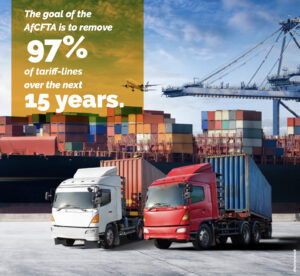
The Goods Protocol entered into force on 30 May 2020 and has nine annexures, seven of which have been negotiated. The two remaining annexures, namely tariff schedules and rules of origin, have a direct bearing on labour and the decent work agenda. There is no reference to or provision for labour in the Goods Protocol. Yet labour is affected by trade liberalisation, given its direct link to producing and trading goods.
Why trade unions should care about the Protocol on Trade in Goods
Removing barriers to trade can have consequences for workers. It can affect jobs, worker protection, social security and trade union rights.
Trade liberalisation, outsourcing and the loss of jobs
Companies have an incentive to move production to the lowest cost location when tariffs and other barriers are removed. The result is the transfer of jobs from countries with higher wages and better worker protection to countries where production costs are lower. This can trigger a ‘race to the bottom’, where countries try to out-compete each other by lowering regulations and labour standards.
Trade liberalisation and agriculture
Over 50% of Africa’s working population is employed in agriculture, and the majority are women. Workers in agriculture stand to lose the most from trade liberalisation. Some countries will see an increase in agricultural employment, while others will suffer severe job losses, according to the World Bank. The most vulnerable workers, including those with lower skills and living in less developed countries, are likely to suffer from this redistribution of labour.
The agriculture sector before and after trade liberalisation
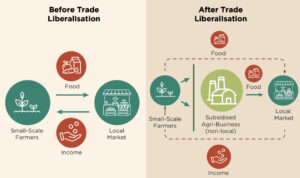
Before liberalisation, small-scale farmers are protected by trade barriers and can earn an income by selling directly to markets at a price determined by local supply and demand. After trade liberalisation, a market is likely to attract agribusinesses from other countries, many of which receive subsidies. It is often impossible for small-scale farmers to compete because these producers can sell to local markets at lower prices. Particularly in less developed countries, this can lead to a loss of local income, reduced food security and increased poverty.
The risks to small-scale farmers from trade liberalisation can only be addressed through sector-specific safeguards in the AfCFTA. Understanding these pitfalls will help unions prepare for, negotiate and help enforce labour protections.
The AfCFTA stakeholders: identifying how best to influence decision-makers
While the 54 signatory states to the AfCFTA have a say in drafting protocols, implementing and enforcing, decision-making power is held by the following stakeholders:
The Assembly of Heads of State, which is the principal decision-making body of the African Union, provides strategic guidance and oversight of the AfCFTA and has the exclusive power to adopt interpretations of the agreement on the recommendation of the Council of Ministers.
The Council of Ministers is made up of trade ministers and other officials appointed by State Parties in the AfCFTA.
The AfCFTA Secretariat is the coordinating and administrative body that assists the States Parties to ensure progress in negotiations and implementation. The Secretariat is facilitating the remaining negotiations on the Protocol on Trade in Goods, i.e. tariff schedules and rules of origin.
Trade unions may have an opportunity to influence the Secretariat through participation in the organisation’s advocacy and dispute resolution functions.
Technical Committees – A number of technical committees are responsible for implementation, monitoring and evaluation of each of the AfCFTA protocols. For the Protocol on Trade in Goods, the Committee on Trade in Goods and its sub-committees are responsible for implementation and monitoring.
AfCFTA Committee on Trade in Goods
 Source: TRALAC, 2022A
Source: TRALAC, 2022A
Four ways trade unions can influence the Goods Protocol
-
Demand a seat at the negotiating table
The AfCFTA entered into force before negotiations were completed, unlike most international trade agreements. This means that trade unions still have an opportunity to influence decision-makers on rules of origin and tariff schedules, even though some aspects of the agreement have already been implemented.
At the national level, unions can influence decisions that will be brought through the AfCFTA Secretariat or the Council of Ministers. Influence could reach the Assembly of Heads of State, the highest decision-making body on the AfCFTA, if enough pressure is applied. To approach and influence the Protocol on Trade in Goods, transnational networks such as those supported by ITUC-Africa will be crucial.
-
Insist on labour provisions
Most trade agreements include labour provisions to protect and promote workers’ rights. These provisions pave the way for a more human-centred approach to trade in the pursuit of the decent work agenda. The ILO has created a global database of labour provisions in trade agreements to provide information on best practices and global trends and to assist trade unions and other organisations.
-
Monitor and evaluate AfCFTA implementation
Trade unions must be prepared and be advocates for immediate change should workers be negatively affected by the AfCFTA agreement. This requires actively monitoring and evaluating the AfCFTA and its various policies. Trade unions have a unique opportunity to serve as a local resource to trade authorities, who are often removed from the day-to-day impact of their decisions. To prepare to monitor and evaluate, visit:
- Factsheets on the AfCFTA and the Protocol on Trade in Goods
- Training manual on the guidelines for Rules of Origin in the AfCFTA
-
Actively prepare for the AfCFTA review process
The AfCFTA agreement will be subject to periodic reviews led by the AfCFTA Secretariat to reflect prevailing trends, opportunities and challenges and to better serve the State Parties. Trade union demands not met during negotiations should be articulated and lobbied for during the AfCFTA review.
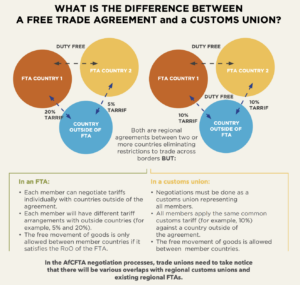
Essential resource: A Guide to the AfCFTA Protocol on Trade in Goods

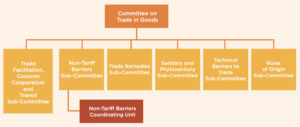 Source: TRALAC, 2022A
Source: TRALAC, 2022A